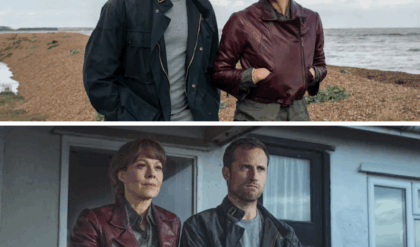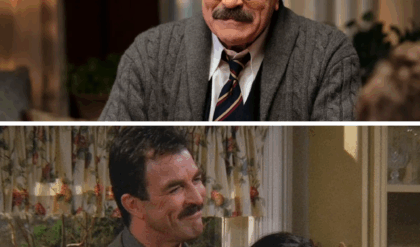The neon glow of Hollywood’s eternal summer has dimmed into a crisp November chill, but the air crackles with electricity sharper than a Mother Box’s pulse. November 17, 2025—eight years to the day since the theatrical release of Justice League stormed multiplexes, igniting a cultural firestorm that still smolders—marks not just a nostalgic milestone, but a seismic pivot point for the DC Extended Universe. Zack Snyder, the visionary architect behind Man of Steel, Batman v Superman: Dawn of Justice, and the sprawling epic that became Zack Snyder’s Justice League, has been flooding Instagram with a torrent of never-before-seen DCEU artifacts. Polaroids of Henry Cavill’s brooding Superman gazing skyward like a forgotten god; stark black-and-white portraits of Ben Affleck’s grizzled Batman, armored in Knightmare grit; shadowy glimpses of Jason Momoa’s Aquaman wielding his trident like Poseidon’s wrath; even a chilling close-up of Jared Leto’s Joker, smirking from the apocalypse’s edge. These aren’t random throwbacks. They’re flares in the night, signaling what insiders are now boldly dubbing a “full-play scenario” for the SnyderVerse’s triumphant return. And the fuse? Warner Bros. Discovery’s blockbuster sale, a corporate earthquake that could topple James Gunn’s nascent DC Universe and resurrect Snyder’s mythic saga from the ashes.
It’s no secret that Warner Bros. Discovery (WBD) has been teetering on the edge of transformation since the 2022 merger of WarnerMedia and Discovery—a shotgun wedding that birthed a $40 billion behemoth but sowed seeds of discord. CEO David Zaslav, the deal-making dynamo who steered the consolidation, promised synergies and streaming supremacy. HBO Max (now Max) ballooned to 100 million subscribers, CNN clawed back relevance amid cable’s death spiral, and the Warner Bros. film slate churned out hits like Barbie and Dune: Part Two. Yet, beneath the gloss, cracks widened: linear TV revenues plummeted 10% year-over-year in Q3 2025, ad dollars fled to TikTok’s siren call, and the DC franchise—once a billion-dollar juggernaut—stumbled under the weight of reboots and recasts. Enter the unsolicited overtures: a cascade of bids from media titans eyeing WBD’s crown jewels. Paramount Skydance lobbed a $58 billion cash-heavy grenade in October, valuing shares at $23.50 apiece—a premium that sent WBD stock rocketing 100% for the year, peaking at a 52-week high of $23.06. Comcast, the cable colossus behind NBCUniversal, circled with whispers of a full swallow or piecemeal carve-up, fresh off Saudi Arabian talks about theme park tie-ins. Netflix, the streaming behemoth that’s devoured Snyder’s Rebel Moon saga, is reportedly prepping a selective strike for Warner’s IP vault, including DC’s pantheon. Even Apple and Amazon lurk in the shadows, their war chests bloated from tech’s endless boom.
By mid-November, WBD’s board—chaired by Samuel DiPiazza—formally launched an auction, with non-binding preliminary bids due by November 20. The deadline looms like Darkseid’s boom tube: a reverse spin-off remains on the table, cleaving Warner Bros. (studios, HBO, Max) from Discovery Global (CNN, HGTV, TNT Sports) to unlock $20 billion in value. But sources paint a more explosive picture: a full sale, potentially sealing by Christmas, that could fetch $70 billion or more. Zaslav, ever the survivor, renegotiated his golden parachute last week—a $100 million base plus stock options vesting on “change of control,” ensuring he exits as a billionaire regardless of who claims the throne. “This isn’t retreat,” one executive confided. “It’s evolution. The industry’s consolidating faster than a Kryptonian under a red sun.” Wall Street agrees: analysts at Barclays and JPMorgan upgraded WBD to “buy,” forecasting a bidding war that could eclipse Disney’s Fox acquisition in 2019. Yet, for comic book faithful, the real stakes aren’t balance sheets—they’re the fate of gods and monsters.

Cue Zack Snyder, the bearded prophet whose ouster in 2017 amid family tragedy and studio meddling birthed the #ReleaseTheSnyderCut movement—a grassroots uprising that mobilized 100,000 petitions, celebrity endorsements from Chris Pine to The Roots, and a $70 million HBO Max drop in 2021. That four-hour opus, with its operatic slow-motion, Hans Zimmer thunderclaps, and Knightmare visions of a fallen world, grossed $200 million in post-theatrical rentals alone, proving Snyder’s vision resonated like a sonic boom. Fast-forward to 2025: Snyder, 59 and thriving on Netflix’s Rebel Moon sequels, relaunched his Instagram in late September with a vow to “just get started.” What followed was a deluge—over 20 DCEU relics in six weeks, timed with surgical precision to the Justice League anniversary. A Leica-shot portrait of Affleck’s Batman, captioned “One of my favorite Batman photos,” drew 2 million likes and a flood of #RestoreTheSnyderVerse tags. A grainy Polaroid of Cavill’s Man of Steel suit, eyes locked on an unseen horizon, layered with Zimmer’s “Sent Him for a Reason,” sparked 500,000 shares. Snyder’s likes? Telling. He hearted fan edits pitting Man of Steel‘s $668 million global haul against Gunn’s Superman (2025), which limped to $450 million amid “cultural nobody” backlash. Gal Gadot amplified the echo, reposting Wonder Woman trident shots with fire emojis. Even Ezra Miller, post-controversy, surfaced in a vague Hollywood comeback tease. “It’s not coincidence,” a production insider leaks. “Zack’s building the wave. The anniversary is the crest.”
This digital drumbeat syncs eerily with WBD’s turmoil, fueling whispers that a sale could eject Gunn and Safran—the Guardians auteur and producer power couple who rebooted DC as the brighter, quippier DCU in 2023. Gunn’s Chapter One: Gods and Monsters launched with Creature Commandos animation and Superman, starring David Corenswet as a boy-scout Clark Kent, but stumbled: Peacemaker Season 2 drew “spiritual sequel” groans, Lanterns greenlit amid script rewrites, and The Brave and the Bold Batman—envisioned as a father-daughter tale—sits in development hell, clashing with Matt Reeves’ gritty Elseworlds. Gunn’s own words betray the flux: in a BobaTalks interview, he hedged on his 10-year blueprint, laughing, “Whether or not that’ll be me depends on a lot of things in life.” Insiders claim it’s no jest. If Paramount—led by David Ellison, the Top Gun: Maverick scion—snags WBD, Mike De Luca (ex-New Line, The Social Network) takes DC reins for a “visionary reset,” sidelining Gunn’s ensemble sprawl for prestige one-offs. Netflix? A dream for Snyder, given their Army of the Dead collab; bids target DC for an “Elseworlds” streaming lane, potentially greenlighting Justice League: Knightmare as animated closure or live-action redux. Comcast? Nolan’s Dark Knight legacy looms, blending theatrical gravitas with Universal’s muscle—Snyder as consultant, Cavill recast or not.
The insider track record seals the speculation’s potency. This source—tagged as “Hollywood’s whisperer” in trades—flagged Daredevil: Born Again‘s Marvel overhaul in early 2024, nailing the family pivot months before The Hollywood Reporter confirmed. They chronicled Zaslav’s split blueprint pre-June announcement and Paramount’s aggressive NDA push. Now, they assert: “Sale means Gunn’s out. DC’s a blank slate, and Snyder’s the eraser.” Fan fervor amplifies the roar—#SnyderVerseReturn trended for 72 hours post-Snyder’s latest Joker drop, amassing 1.2 million impressions on X. Petitions for Cavill’s return hit 300,000 signatures; Affleck, semi-retired but nostalgic, liked a #MakeTheBatfleckMovie montage. Momoa, ever the bro, tweeted a trident emoji under Snyder’s Aquaman still. Even Ray Fisher, whose Cyborg arc was gutted, surfaced with a subtle “Family reunion?” quip. Critics, once divided—Batman v Superman at 29% on Rotten Tomatoes, redeemed by Snyder Cut’s 71%—now nod to its cult endurance. The Hollywood Reporter mused, “In Gunn’s quippy reboot era, Snyder’s operatic tragedy feels prescient—a Thanos-scale epic unfinished.”
Yet, revival isn’t assured. Legal snarls—antitrust probes from FTC hawks like Lina Khan—could drag bids into 2026. Actor baggage lingers: Miller’s scandals, Affleck’s burnout, Cavill’s post-Witcher pivot to Argylle. Snyder himself demurs in a rare Variety dispatch: “I’m humbled by the love. But heroes don’t dictate; fans do.” Still, the stars align like a Mother Box convergence. Saudi Arabia’s trillion-dollar sovereign fund, already inked with Snyder for 300-style epics, eyes WBD for IP-fueled theme parks—Comcast’s Brian Roberts huddled with them last week. Trump-adjacent players like Jared Kushner broker Hollywood-Saudi bridges, dangling Dune-scale spectacles. If the Kingdom bids, Snyder’s their man: mythic, marketable, Muslim-friendly via global casts.
As bids flood in and the anniversary dawns, one truth endures: DC’s soul is a battlefield of unfinished symphonies. Gunn’s DCU, with its Peacemaker punchlines and Supergirl sass, courts the TikTok crowd but yearns for Snyder’s shadow— the brooding Man of Steel who bled for Metropolis, the Batman who broke his no-kill vow in a rain-soaked alley. A sale isn’t apocalypse; it’s opportunity. Zaslav’s exit package cashes his chips, but the house—Warner Bros., HBO’s prestige pedigree, DC’s 85-year lore—remains. Will Netflix forge a streaming Valhalla, Paramount a theatrical thunder god, or Comcast a Nolan-Snyder hybrid? Or does the split birth a leaner Warner, hungry for heroes who soar, not quip? Snyder’s posts, those pixelated prophecies, whisper the answer: the SnyderVerse isn’t dead. It’s dormant, awaiting the boom that awakens it. On this eve of reckoning, fans don’t just hope—they demand. Because in the world of gods and men, the real power isn’t Kryptonian; it’s collective. The signal’s clear. The League assembles. Boom.





